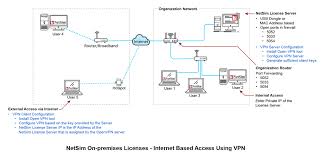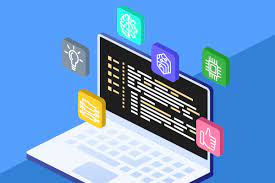Mastering the Art of Effective Management: A Guide for Aspiring Managers
The Role of a Manager in Today’s Workplace
Managers play a crucial role in the success of any organisation. They are responsible for overseeing teams, guiding projects, and ensuring that business objectives are met. In today’s fast-paced and dynamic workplace, the role of a manager has evolved to encompass a wide range of skills and responsibilities.
Leadership and Decision-Making
One of the key functions of a manager is to provide leadership to their team. This involves setting clear goals, communicating expectations, and motivating employees to perform at their best. Managers must also make important decisions that impact the direction and success of the organisation.
Team Building and Communication
Effective managers understand the importance of building strong teams. They foster collaboration, encourage diversity of thought, and create an inclusive work environment where every team member feels valued. Communication is another vital skill for managers, as they must convey information clearly, listen actively, and resolve conflicts when they arise.
Strategic Planning and Problem-Solving
Managers are tasked with developing strategic plans that align with the overall goals of the organisation. They analyse data, identify trends, and make informed decisions to drive business growth. When challenges arise, managers must be adept at problem-solving, thinking creatively to find solutions that benefit both the team and the company.
Adaptability and Continuous Learning
In today’s rapidly changing business landscape, managers must be adaptable and open to learning new skills. They need to stay informed about industry trends, technological advancements, and best practices in management. By continuously improving their knowledge and abilities, managers can lead their teams more effectively in an ever-evolving workplace.
Conclusion
The role of a manager is multifaceted and demanding, requiring a diverse set of skills to navigate the challenges of modern business environments. Effective managers inspire their teams, drive innovation, and contribute to the overall success of their organisations. By embracing leadership opportunities and honing their abilities, managers can make a positive impact on both their teams and the bottom line.
Five Key Advantages of Effective Management: Leadership, Decision-Making, Teamwork, Problem-Solving, and Adaptability
- Managers provide leadership and direction to their teams.
- Managers make critical decisions that drive the success of the organisation.
- Managers foster teamwork and collaboration among team members.
- Managers are skilled problem-solvers who find solutions to challenges.
- Managers continuously adapt and learn to stay ahead in a dynamic workplace.
Seven Key Challenges Faced by Managers: From Micromanagement to Accountability Stress
- Micromanaging employees, which can stifle creativity and autonomy
- Difficulty in balancing the needs of upper management with those of frontline staff
- Risk of burnout due to high levels of responsibility and workload
- Challenges in resolving conflicts within the team effectively
- Pressure to meet tight deadlines and achieve demanding targets
- Potential for strained relationships with team members if communication is lacking
- Accountability for both individual and team performance, leading to added stress
Managers provide leadership and direction to their teams.
Managers play a pivotal role in providing essential leadership and direction to their teams. By setting clear goals, communicating effectively, and guiding team members towards a common vision, managers create a sense of purpose and cohesion within the group. Their leadership ensures that tasks are executed efficiently, resources are optimally utilised, and objectives are achieved in alignment with the overall goals of the organisation. Through their guidance and support, managers empower their teams to excel and contribute towards the collective success of the team and the company as a whole.
Managers make critical decisions that drive the success of the organisation.
Managers play a pivotal role in the success of an organisation by making critical decisions that shape its direction and outcomes. Their ability to analyse data, assess risks, and consider various factors allows them to make informed choices that have a significant impact on the business’s performance and growth. By taking decisive actions and steering the organisation towards strategic goals, managers not only drive success but also inspire confidence among team members and stakeholders. The skillful decision-making of managers is instrumental in navigating challenges, seizing opportunities, and ensuring the long-term sustainability of the organisation.
Managers foster teamwork and collaboration among team members.
Managers play a pivotal role in fostering teamwork and collaboration among team members within an organisation. By encouraging open communication, mutual respect, and a shared sense of purpose, managers create an environment where individuals can work together effectively towards common goals. Through team-building activities, constructive feedback sessions, and promoting a culture of inclusivity, managers help to strengthen relationships within the team and enhance overall productivity. This emphasis on teamwork not only improves employee morale but also leads to innovative solutions and successful outcomes for the organisation as a whole.
Managers are skilled problem-solvers who find solutions to challenges.
Managers are adept problem-solvers who excel in finding effective solutions to the myriad challenges that arise in the workplace. Drawing upon their analytical skills, experience, and strategic thinking, managers approach problems with a methodical mindset to identify root causes and devise innovative solutions. Their ability to navigate complex situations, think critically, and collaborate with team members enables them to address challenges efficiently and drive continuous improvement within their teams and organisations.
Managers continuously adapt and learn to stay ahead in a dynamic workplace.
Managers play a vital role in today’s ever-evolving workplace by recognising the importance of continuous adaptation and learning. In order to effectively lead their teams and drive organisational success, managers understand the necessity of staying ahead in a dynamic environment. By embracing change, seeking new knowledge, and honing their skills, managers can navigate challenges with agility and innovation, ultimately contributing to the growth and resilience of their teams and organisations.
Micromanaging employees, which can stifle creativity and autonomy
Micromanaging employees is a common con associated with managerial roles, as it can hinder creativity and autonomy within a team. When managers excessively monitor and control every aspect of their employees’ work, it can create a stifling environment where individuals feel micromanaged and unable to exercise their own judgment. This lack of autonomy can lead to decreased morale, demotivation, and a sense of disempowerment among team members. Furthermore, micromanagement limits the opportunity for employees to think innovatively, problem-solve independently, and take ownership of their work, ultimately impeding the overall productivity and growth potential of the team.
Difficulty in balancing the needs of upper management with those of frontline staff
One significant challenge faced by managers is the difficulty in balancing the needs of upper management with those of frontline staff. Managers often find themselves in a delicate position, having to meet the expectations and demands of senior executives while also addressing the concerns and well-being of their direct reports. Striking a harmonious equilibrium between these two sets of stakeholders can be a complex task, as the priorities and perspectives of upper management may sometimes conflict with the day-to-day realities and aspirations of frontline staff. This con can create tension, communication barriers, and decision-making dilemmas for managers seeking to navigate between these contrasting interests within the organisation.
Risk of burnout due to high levels of responsibility and workload
Managers face a significant con in the form of the risk of burnout due to the high levels of responsibility and workload they carry. The demanding nature of managerial roles, which often involve juggling multiple tasks, making critical decisions, and overseeing team performance, can lead to excessive stress and exhaustion. The pressure to meet deadlines, achieve targets, and handle complex challenges can take a toll on managers’ mental and physical well-being, potentially leading to burnout if not managed effectively. It is crucial for organisations to support their managers by promoting work-life balance, providing resources for stress management, and fostering a culture that values employee health and well-being.
Challenges in resolving conflicts within the team effectively
Resolving conflicts within a team can be a significant challenge for managers in the workplace. Conflicting personalities, differing opinions, and misunderstandings can all contribute to tension and discord among team members. Managers must navigate these conflicts delicately, balancing the need to address issues promptly while maintaining a harmonious work environment. Failure to resolve conflicts effectively can lead to decreased morale, productivity, and overall team cohesion. It requires strong communication skills, emotional intelligence, and a proactive approach to mediation in order to address underlying issues and foster a positive and collaborative team dynamic.
Pressure to meet tight deadlines and achieve demanding targets
Managers often face the challenging con of being under immense pressure to meet tight deadlines and achieve demanding targets in today’s fast-paced work environments. The constant push to deliver results within strict timeframes can lead to increased stress levels, burnout, and compromised work-life balance. This pressure can also impact decision-making processes, potentially sacrificing quality for speed. Managers must navigate this con by effectively managing priorities, setting realistic expectations, and fostering a supportive work culture that recognises the importance of well-being alongside performance metrics.
Potential for strained relationships with team members if communication is lacking
When communication between a manager and their team members is lacking, it can lead to strained relationships within the workplace. Misunderstandings, confusion, and a lack of clarity can arise, causing frustration and resentment among team members. Without effective communication, team dynamics may suffer, collaboration may be hindered, and trust between the manager and employees may erode. This con highlights the importance of clear and open communication in fostering positive relationships and maintaining a harmonious work environment.
Accountability for both individual and team performance, leading to added stress
One significant con of being a manager is the high level of accountability placed on them for both individual and team performance, which often leads to added stress. Managers are responsible for not only their own work but also for guiding and supervising the performance of their team members. This dual accountability can create pressure to ensure that every team member meets expectations and that overall objectives are achieved. The weight of this responsibility can be overwhelming at times, as managers must navigate challenges, address underperformance, and make tough decisions that impact both individuals and the team as a whole, contributing to heightened levels of stress in their role.












